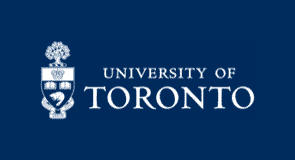Headache
- Perform a patient-centered interview that identifies:
- Symptoms of secondary headaches, including red flags of potentially serious causes (e.g. intracranial bleed, meningitis etc.).
- Features that may differentiate types of headache that commonly present in primary care e.g. migraine, tension, sinus, and medication over-use headaches
- Perform a focused physical exam that identifies signs of secondary causes, including potentially serious causes.
- Propose a management plan that includes:
- Appropriate and timely investigation and disposition if a potentially serious secondary cause is suspected;
- Appropriate evidence-informed pharmacological and non-pharmacological modalities for common headache types (ie migraine, tension).
Core Resources
Approach to the Undifferentiated-Headache
Wong D, Thomas M. Undifferentiated Headache One-Page Primer. DFCM Open. 2013. Available at: http://dfcmopen.com. Attribution CC BY-NC-ND
MigraineTension-Headache
Wong D, Hooks R. Migraine Tension Headache One-Page Primer. DFCM Open. 2013. Available at: http://dfcmopen.com. Attribution CC BY-NC-ND
CORE Neck Tool and Headache Navigator
Toronto: Centre for Effective Practice. Reprinted with Permission from Centre for Effective Practice (July 2016). CORE Neck Tool and Headache Navigator. https://thewellhealth.ca/wp-content/uploads/2016/07/CEP_HeadandNeck_2016_v15.2-1.pdf
Office Emergencies emodule
Jansz G, Law M, Lee S et al. Office Emergencies: Family and Community Medicine Clerkship Core Curriculum Module. University of Toronto.
Supplemental Resources
Guideline for primary care management of headache in adults
Becker WJ, Findlay T, Moga C, Scott NA, Harstall C, Taenzer P. Guideline for primary care management of headache in adults. Can Fam Physician. 2015;61(8):670-679. doi: 61/8/670 [pii].
Frequent Headaches: Evaluation and Management
Walling A. Frequent Headaches: Evaluation and Management. Am Fam Physician. 2020;101(7):419-428.
Diagnosing and Managing Concussion Tool
Reprinted with Permission from the Centre for Effective Practice. (November 2019). Concussion Tool: Ontario. Toronto: Centre for Effective Practice.
Returning to school following a concussion
Can Fam Physician 2023;69:382-4, 386. DOI: 10.46747/cfp.6906382
